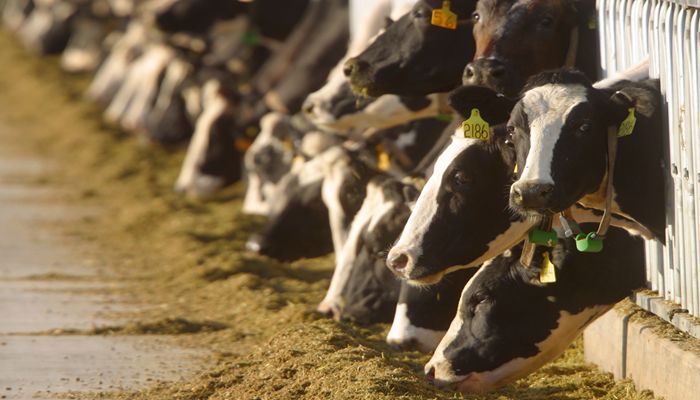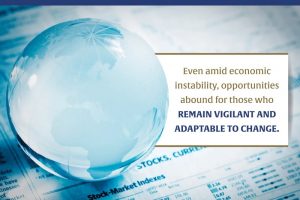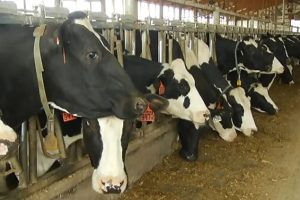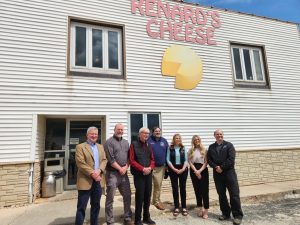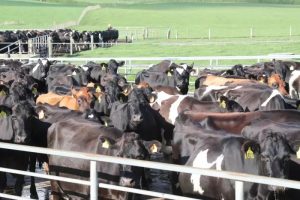
Arizona’s dairy industry in 2024 is the largest agricultural commodity at $1.2 billion in cash receipts, according to the USDA’s latest report. Beef and Dairy flip back and forth. This year, dairy gets to be on top of the leaderboard.
To spend time learning about how we get our milk from the farm to the grocery store and what it takes to care for our Arizona dairy cows is a neat story. One generational dairy farm family tells this story wonderfully: Craig Zinke, Pinal County dairy farmer, our recent guest on the Rosie on the House show. Below, you can listen to the entire radio show where we asked farmer Zinke about his amazing and innovative operation and what he did to maximize productivity.
During our conversation, we highlighted several significant sustainability and market points about dairy farming in Arizona and across America.
- Compared to the Midwest, even the smallest dairy in Arizona is large. Our largest dairies can run about 12,000 active milk cows. But regardless of size, they are family farms and typically generational.
- Due to innovative farming and feed production practices, a gallon of milk in 2017 required 30% less water, 21% less land, and a 19% smaller carbon footprint than it did in 2007.
- Up to one-third of a dairy cow’s diet comes from byproducts (e.g., almond hulls and distillers’ grains) which help to reduce food waste and methane emissions in landfills.
- U.S. Dairy is evaluating feed additives such as nitrate compounds and seaweed that have the potential to reduce enteric methane emissions from cow burps by at least 30%.
- Cows provide good beyond nutritious milk– they help upcycle food scraps, make soil healthier and generate cleaner energy for communities.
- Many of today’s dairy farmers embrace climate-smart technologies and practices to reduce greenhouse gases, conserve water, and turn waste into cleaner energy.
- On average, U.S. dairy farms reuse a gallon of water four times: They water herds, cool fresh milk, and clean equipment before finally watering feed crops.
- 97% of the milk sold in our Arizona grocery stores comes from our Arizona family dairies. We have our well-known family local brands such as Danzeisen Dairy and Shamrock Dairy. But that gallon of store brand milk you just bought this week also came from a local dairy, it just doesn’t have the farm brand slapped on the side of the package.
- Nutritional and technological innovations happen in the dairy every day. Dairy cows even have pedometers so farmers can track every step a cow takes to determine exactly what’s happening with each cow.
- The many steps to get our Arizona grocery-store dairy products begin with milking the cows and storing the milk in stainless steel storage containers that immediately chill the milk to 39 degrees Fahrenheit. Milk is collected from the farm (at a minimum) every 24 hours in large tankers that keep the milk cold during transportation. Then at the processing plant, milk is pasteurized and homogenized before packaging to get ready for the grocery store.
- Dairy farmers growing their feed for their cattle has been a sustainability measure for dairies.
- Upcycling food waste from other industries (think bakery waste, almond hulls, “ugly” food produce) helps keep food out of landfills.
- Also, our friends at Arizona Milk Producers explain the way to tell if milk or a dairy product is local is to look for the code stamped on the container. Any “Local” products begin with the “04” code.
- Editor’s Note: Sources for this article include Arizona dairy farmers, the United Dairymen of Arizona, and the Arizona Milk Producers.
Julie Murphree, Arizona Farm Bureau Director of Strategic Communications.
You can now read the most important #news on #eDairyNews #Whatsapp channels!!!
🇺🇸 eDairy News INGLÊS: https://whatsapp.com/channel/0029VaKsjzGDTkJyIN6hcP1K
